Affiliate links on Android Authority may earn us a commission. Learn more.
The best foldable phones you can buy right now
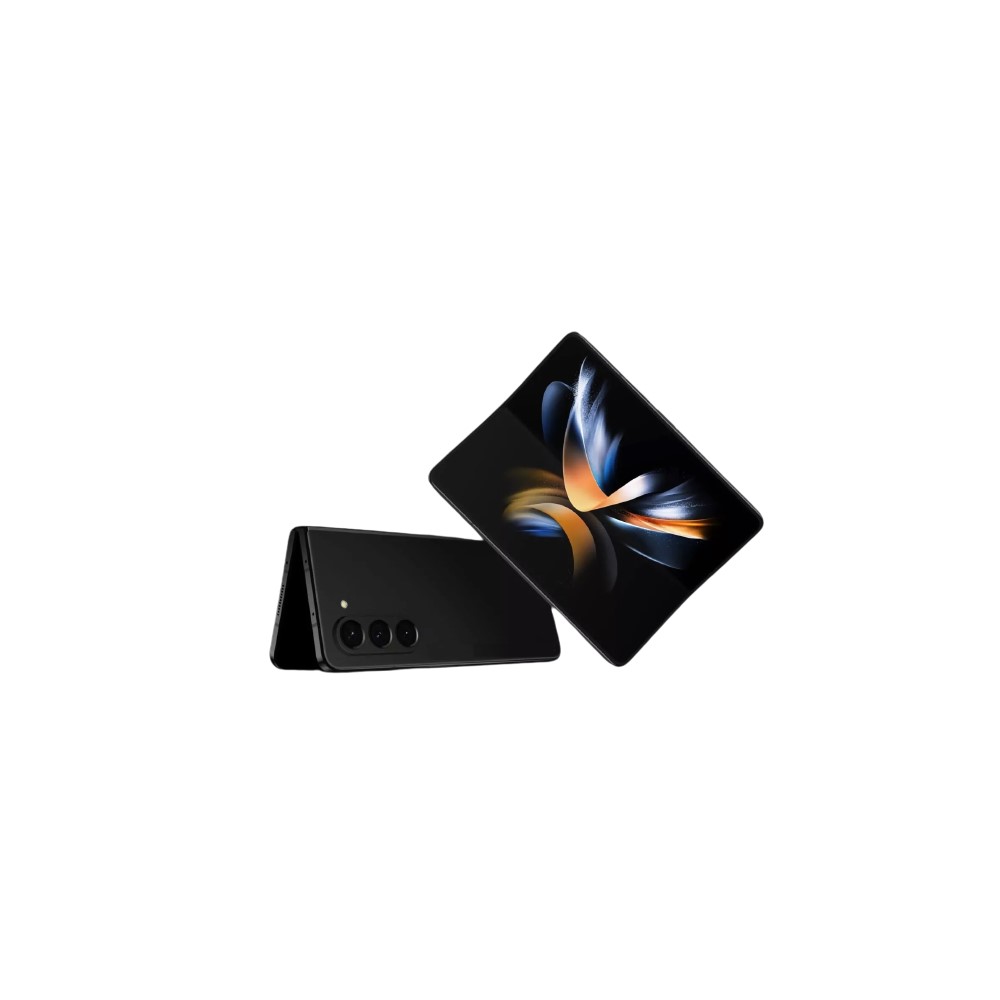
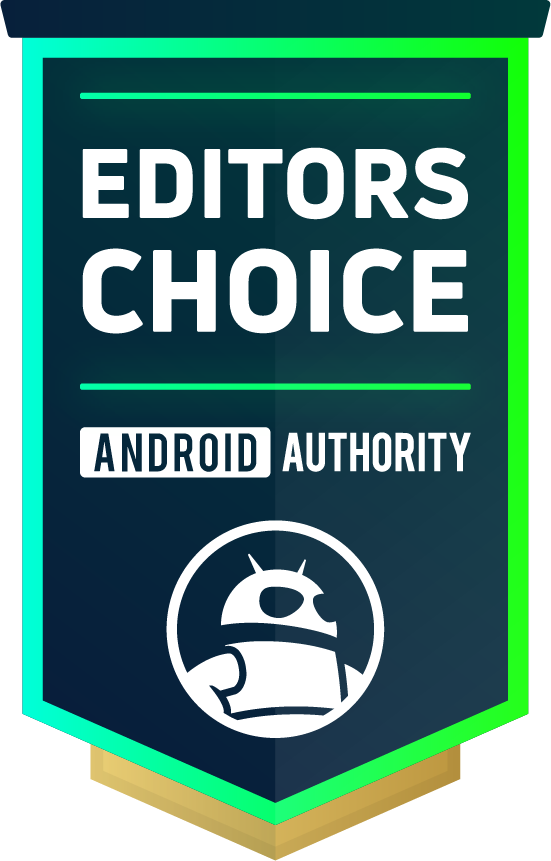
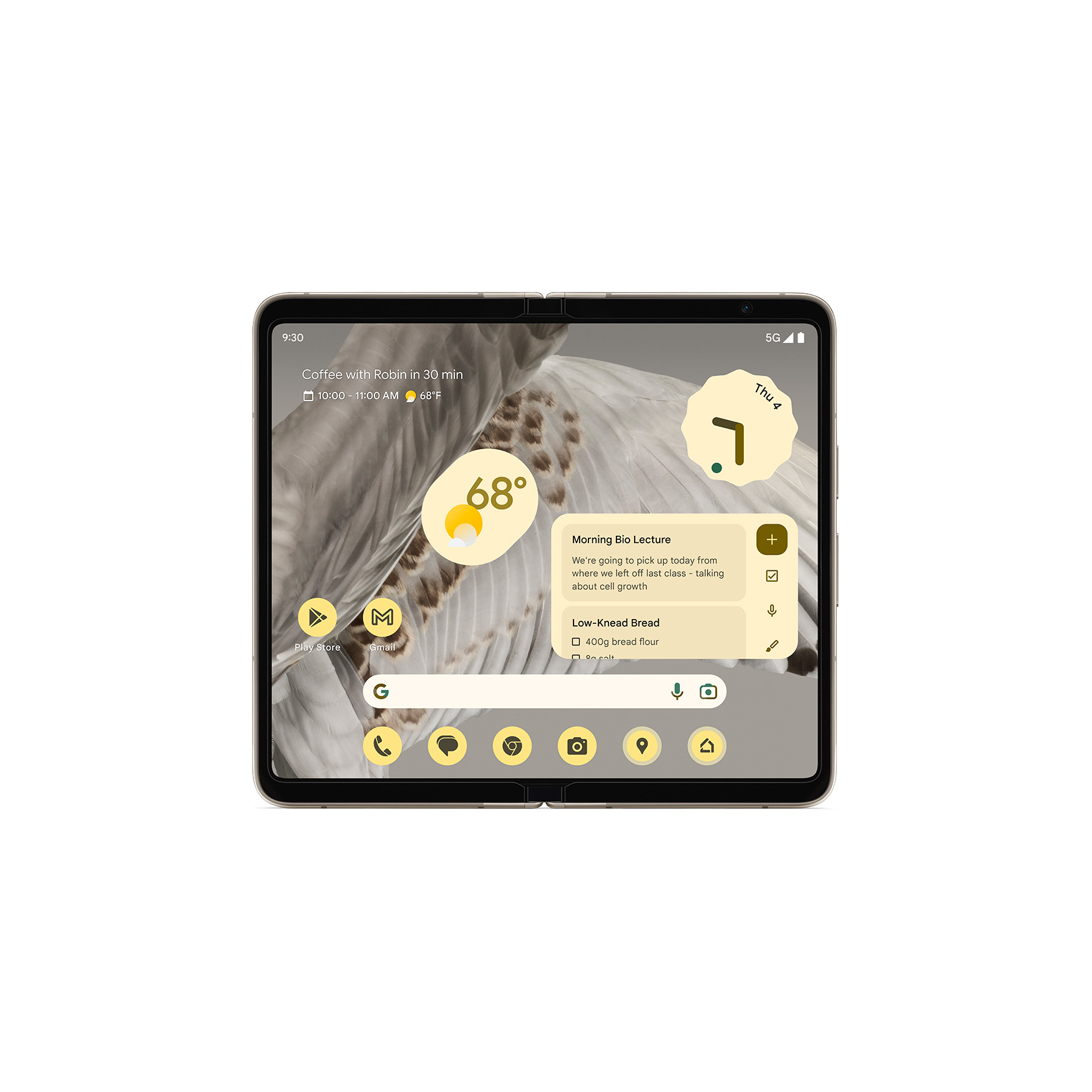
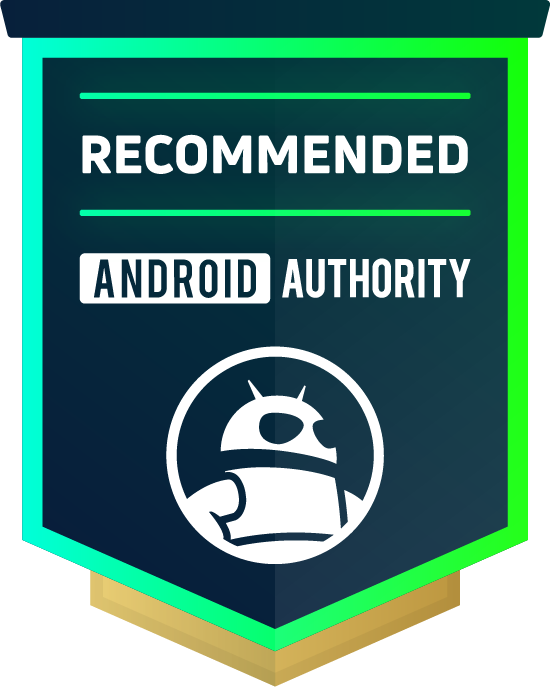
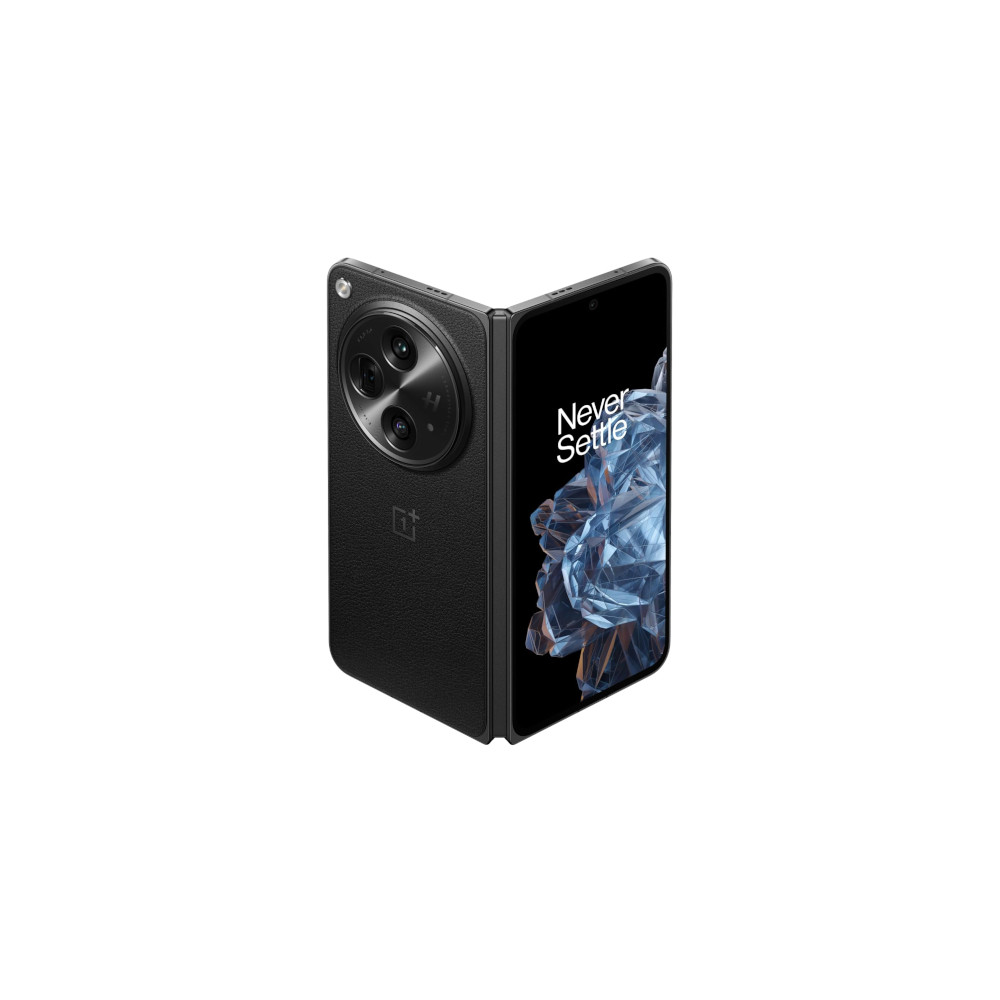

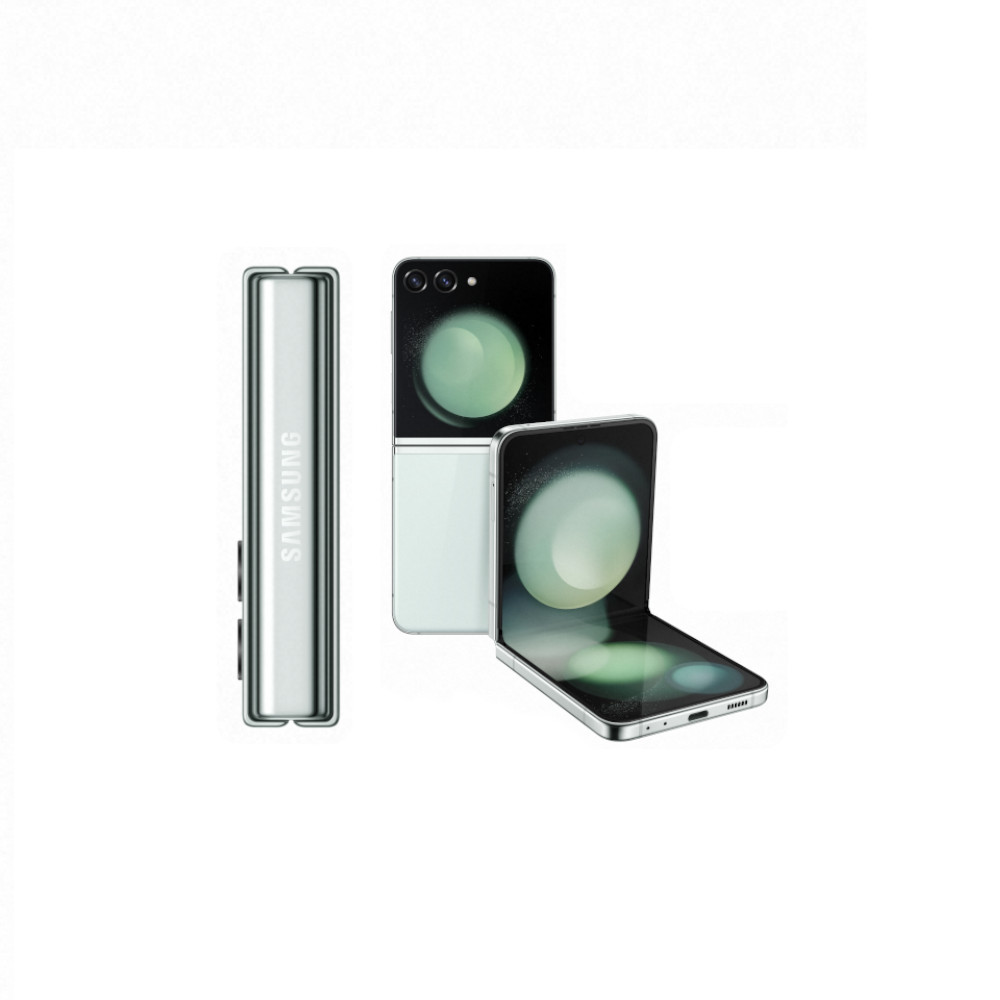

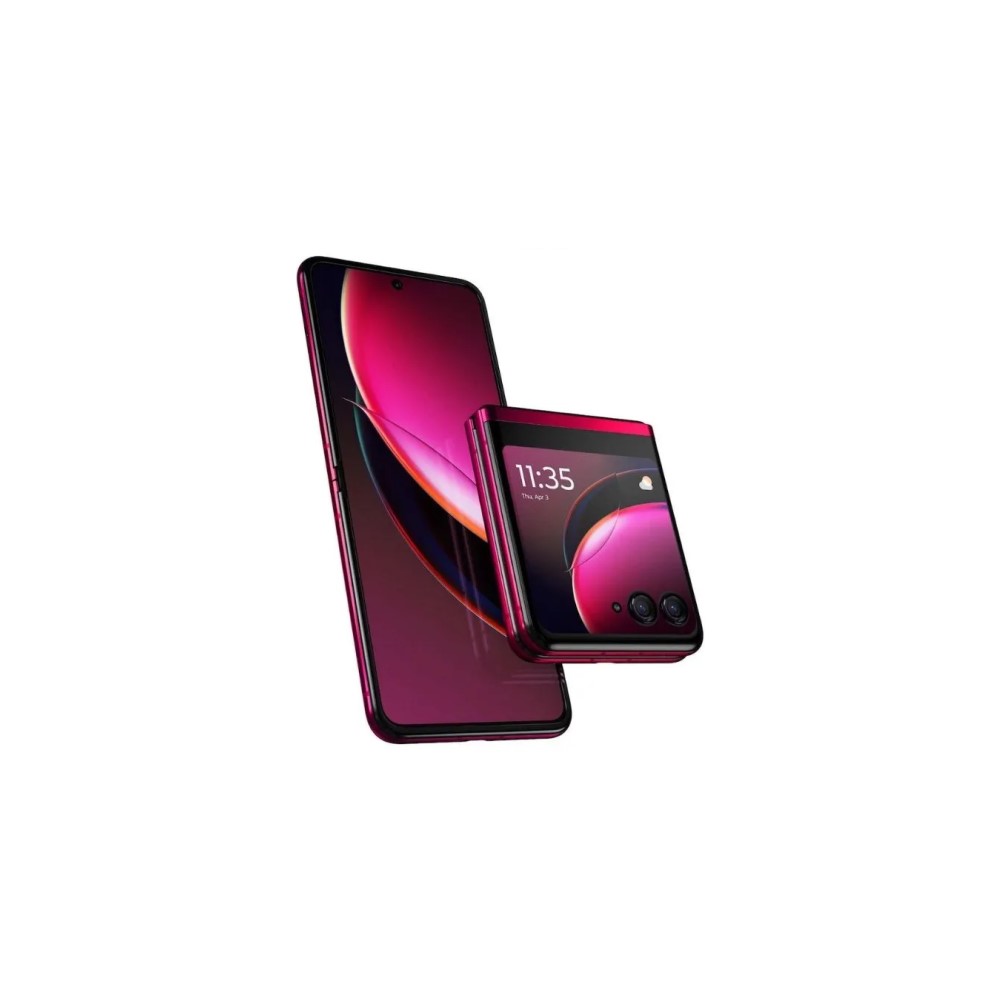

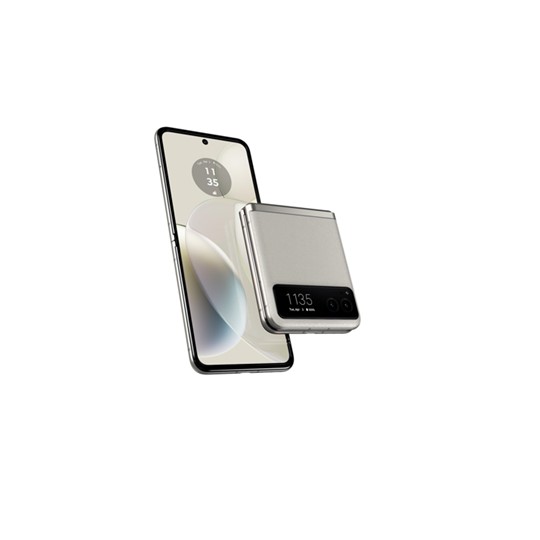

Samsung has officially launched the Galaxy Z Fold 6 and Galaxy Z Flip 6. The new foldable phones include upgraded chipsets, Galaxy AI enhancements, and a lengthier update support policy that matches the Galaxy S24 series. We expect them to replace the Galaxy Z Fold 5 and Z Flip 5 on this list, but we will update this guide once we have fully reviewed both devices.
While the concept of foldable phones has been around for a while, consumers didn’t go hands-on with one until 2018. Samsung was among the first to enter the scene, quickly becoming the biggest player and the only major option in the US. Thankfully, that has changed recently with Google, Motorola, and even OnePlus helping push foldables to new heights of late. If you’re looking for a foldable phone today, you have more options than ever. So in this article, let’s examine the best foldable phones on the market and whether or not they would be a great fit for you.
The best foldable phones: At a glance
- Samsung Galaxy Z Fold 5: If you’re looking for the most established tablet-phone hybrid choice, the Z Fold 5 is a beast with several features that help take advantage of its unique form factor.
- Google Pixel Fold: The Pixel Fold might not be as polished as the Z Fold 5, but for fans of Google’s vision for Android, it’s an easy choice. It’s also an excellent camera that produces truer-to-life results than the Z Fold 5.
- OnePlus Open: The first OnePlus foldable offers a unique Canvas UI and top-notch imaging specs that make it a worthy contender in the foldable race. It’s not as inexpensive as the company’s reputation would have you assume, but it’s still a notch below more established players.
- Samsung Galaxy Z Flip 5: Not all foldables are designed to turn into tablets. Looking for a flip phone experience? Samsung delivers the gold standard here, adding a bigger flex window than ever before.
- Motorola Razr Plus: The Razr Plus marks the first foldable flip phone to pose a serious challenge to the Flip in the United States. While it may not be perfect, its affordability and superior performance in certain tasks, such as running apps on its outer display, make it a noteworthy contender.
Not sure what you’re looking for in a foldable or if they are even a good fit? We have a guide on how to find the right foldable phones at the bottom of this page (hit the jump link to go there now).
Editor’s note: We will update this foldable phone list as more devices hit the market.
A closer look at the best foldable Android phones you can buy
Now that you know what you’re looking for, let’s dive a bit deeper into each model and who they are for.
Google Pixel Fold is great for fans of Google’s take on Android
- Release date: June 28, 2023
- When can you expect a successor? Summer of 2024
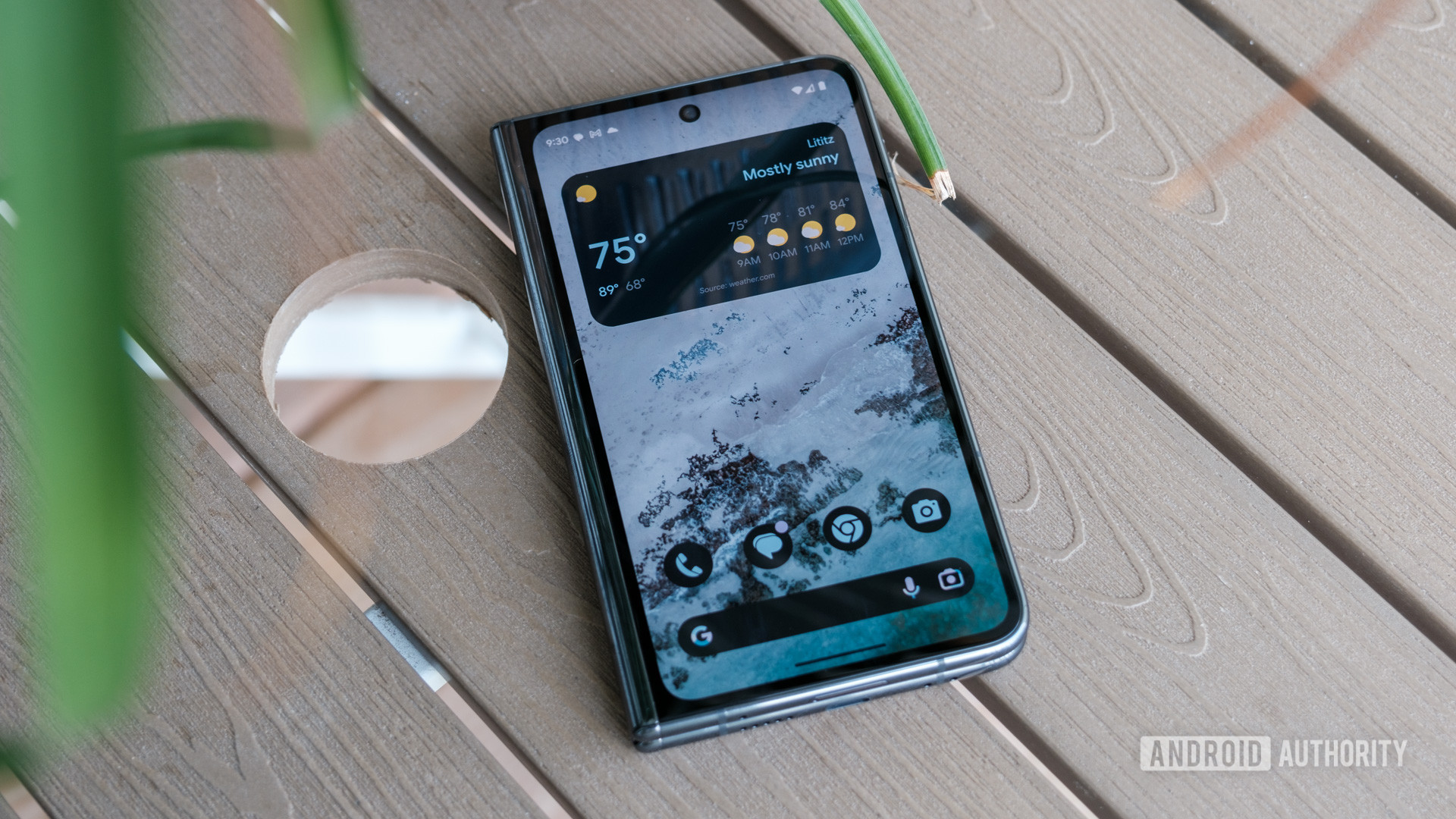
We had little to complain about in our Pixel Fold review as the Google Pixel Fold easily the best hybrid tablet for those who prefer Google’s take on Android. It’s powered by the same Google Tensor G2 found on the Pixel 7 series, as well as the Pixel 7a. It also carries 12GB of RAM, and a 4,821mAh battery with 21W wired charging. This isn’t nearly as fast of a processor as you’ll find on the Fold 5 and some of other options on this list, but in day-to-day you won’t notice a difference other than the Tensor G2 can often get pretty hot.
All the specs are well and good, but what you really care about is the foldable experience, right? Google takes a different approach from the Z Fold, removing the gap in favor of a design that sits perfectly flush when closed. This should hopefully make it a least slightly better at keeping dust or debris out. The hinge can also be positioned at almost any angle. The internal 7.6-inch display is the true darling here and despite some relatively large bezels, it’s a stunning display that works well for running two apps side by side.
Google has worked hard to bring Android features specifically designed for foldables including revamped versions of apps like the Weather app that take better advantage of the display. Unfortunately, as first generation product, it also has some weird quirks when it comes to window resizing, which can make the whole experience feel a bit glitchy. If you can look past its minor flaws, this is a great product and the series is only going to get better with future iterations like the Pixel Fold 2 and beyond.


Pixel Fold specs:
- Display: 7.6-inch 2,208 x 1,840 and 5.8-inch 2,092 x 1,080
- SoC: Tensor G2
- RAM: 12GB
- Storage: 256/512GB
- Cameras: 48, 10.8 and 10.8MP
- Front camera: 9.5MP external, 8MP internal
- Battery: 4,821mAh typical, 4,727 minimum
- Software: Android 13
Samsung Galaxy Z Fold 5
- Release date: August 11, 2023
- When can you expect a successor? Fall of 2024
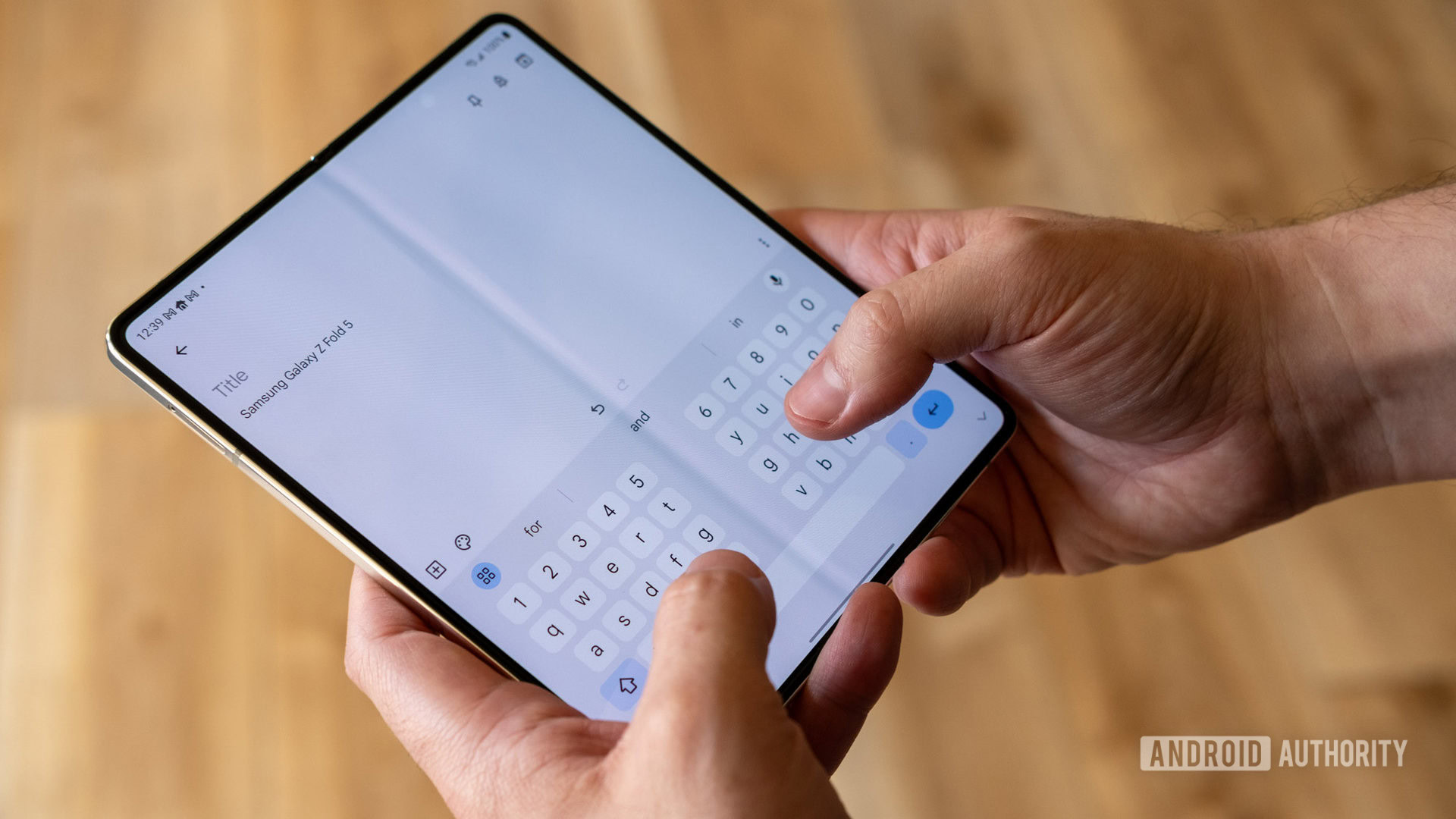
The Galaxy Z Fold 5 is the latest and greatest foldable device from Samsung, bringing a few improvements over its successor, including a brighter internal display, a better hinge that folds completely flat, and a design that’s now 10g lighter. For the most part, the Z Fold 5 is comparable to your typical candy bar flagship in most ways. What really matters is the hybrid tablet experience it delivers.
The main display is quite big when unfolded at 7.6 inches, while the smaller one comes in at 6.2 inches. You also get an IPX8 rating, something you won’t find on all the devices on this list. Really what truly makes the Fold 5 stick out is that Samsung has been building foldable phones for years, meaning it’s had plenty of time to refine its hardware and software. The flex hinge is rock solid and works well. The flex hinge now brings the two halves together more seamlessly. Let’s also not forget the software side of things. One UI lets you run three apps at a time, keep different home screens for the external and internal displays, and so much more.
Of course, it still suffers from most of the downsides we usually see in these devices. It is super expensive and Samsung hasn’t brought any ground-breaking changes to the series in years. As we mentioned in our Galaxy Z Fold 5 review, the weight and thickness are disappointing. We also weren’t convinced with the battery life, which we managed to push through for about a day.


Galaxy Z Fold 5 specs:
- Interior Display: 7.6-inch AMOLED with 120Hz
- External Display: 6.2-inch external AMOLED with 120Hz
- SoC: Snapdragon 8 Gen 2
- RAM: 12GB
- Storage: 256GB, 512GB, or 1TB
- Cameras: 50, 12 and 10MP
- Front camera: 10MP, 4MP UDC
- Battery: 4,400mAh
- Software: Android 13
OnePlus Open
- Release date: October 26, 2023
- When can you expect a successor? Likely late-2024
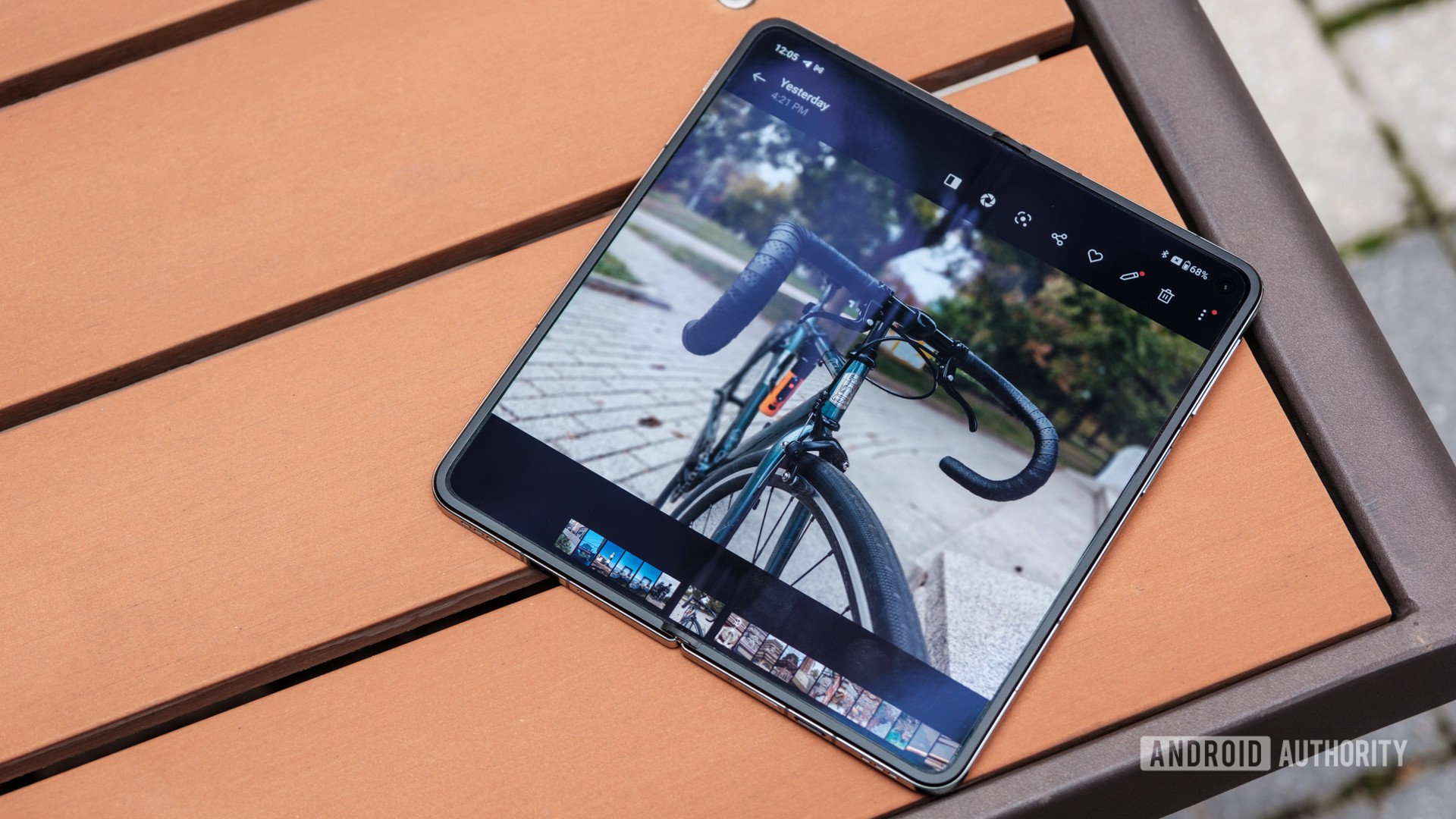
Do you feel like the foldables above are a bit too expensive? The OnePlus Open isn’t exactly cheap, but it is slightly less expensive at $1,699.99. It is no slouch, either. In our OnePlus Open review, we found that this device is quite capable, and we had very little to complain about. The Snapdragon 8 Gen 2 and 16GB of RAM offer great performance, as you’d expect. Battery life is also among the best we’ve seen in a larger foldable; we would usually average close to a day and a half. The 67W SuperVOOC charging is also super fast, and surprisingly, for OnePlus, these cameras are actually quite outstanding.
Unfortunately, the Open might be the least durable option on this list, as the IPX4 rating is pretty disappointing. It’s also the only option that doesn’t offer wireless charging. Its software also doesn’t have the level of polish that you’d find with Samsung. You can’t specify a different homescreen experience of the internal and external display and there’s a bit more general glitchness when even compared to the Pixel Fold. On the bright side, some of its features like its unique Canvas feature that lets you run three apps but minimize them off to the side, help it stand out from its competitors.
The OnePlus One is a great first attempt and is probably one of the few OnePlus products I’d recommend, but just be aware it may take it a few years to truly reach the same level las some of its competitors in this space.


Open specs:
- Interior Display: 7.82-inch LTPO3 Flexi-fluid AMOLED with 120Hz
- External Display: 6.31-inch LTPO3 Super Fluid OLED with 120Hz
- SoC: Snapdragon 8 Gen 2
- RAM: 16GB
- Storage: 512GB
- Cameras: 64, 48, and 48MP
- Front camera: 20MP, 32MP
- Battery: 4,805mAh
- Software: Android 13
Samsung Galaxy Z Flip 5
- Release date: August 11, 2023
- When can you expect a successor? Summer of 2024
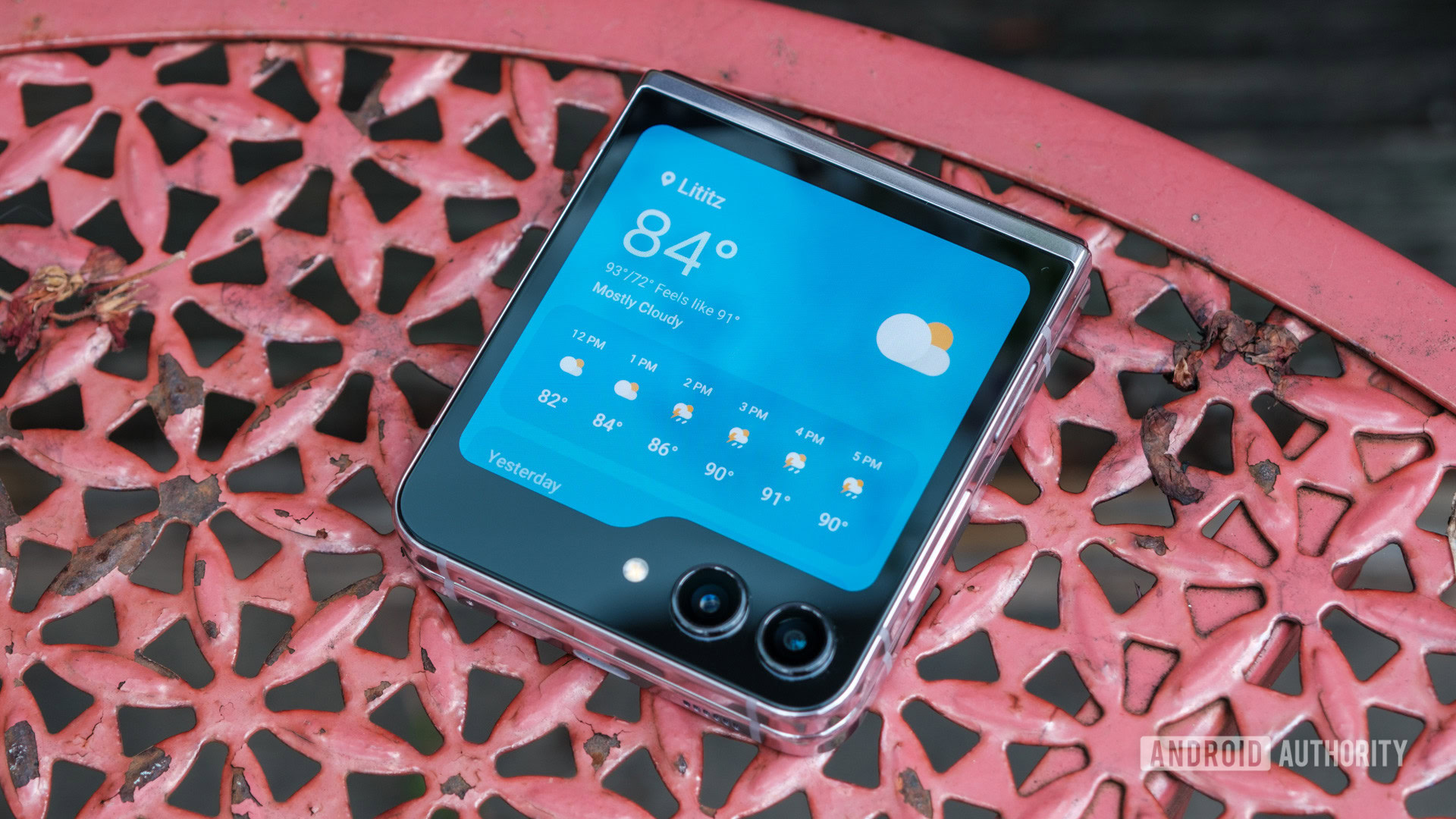
So far, all the options on this list have been full-sized phones that turn into tablets, but what about foldable flip phones? That’s where the Flip series comes in.
The Samsung Z Flip 5 sees a major upgrade to its Cover Screen, now rebranded as the Flex Window. Jumping from 1.9-inches to 3.4-inches, the new screen has a unique folder-like shape and improved widgets. There are even ways to get full apps running on it, though they are dubbed experimental by Samsung.
In addition to the new outer display, the Z Flip 5 has a new gapless folding internal display and improved internals, including the Snapdragon 8 Gen 2 processor. Beyond this, you’ll find a lot of similarities to the Flip 4, including the same 3,700 mAh battery, the same cameras, and the same 8GB of RAM. The Z Flip 5 has dropped the 128GB storage variant, though, now offering just 256GB and 512GB configurations.
The Galaxy Z Flip 5 is the most affordable folding option from Samsung in 2023, so it might just be the springboard the company needs to reach the masses. It is also made beautifully and offers a great experience. In our Galaxy Z Flip 5 review, our only main complaints were that battery life is average at best, and sustained performance can be a bit iffy.


Galaxy Z Flip 5 specs:
- Internal display: 6.7-inch FHD+ AMOLED with 120Hz
- External display: 3.4-inch Super AMOLED 60Hz, 720×748
- SoC: Snapdragon 8 Gen 2
- RAM: 8GB
- Storage: 256/512GB
- Cameras: 12 and 12MP
- Front camera: 10MP
- Battery: 3,700mAh
- Software: Android 13
Motorola Razr Plus
- Release date: June 11, 2023
- When can you expect a successor? Summer of 2024
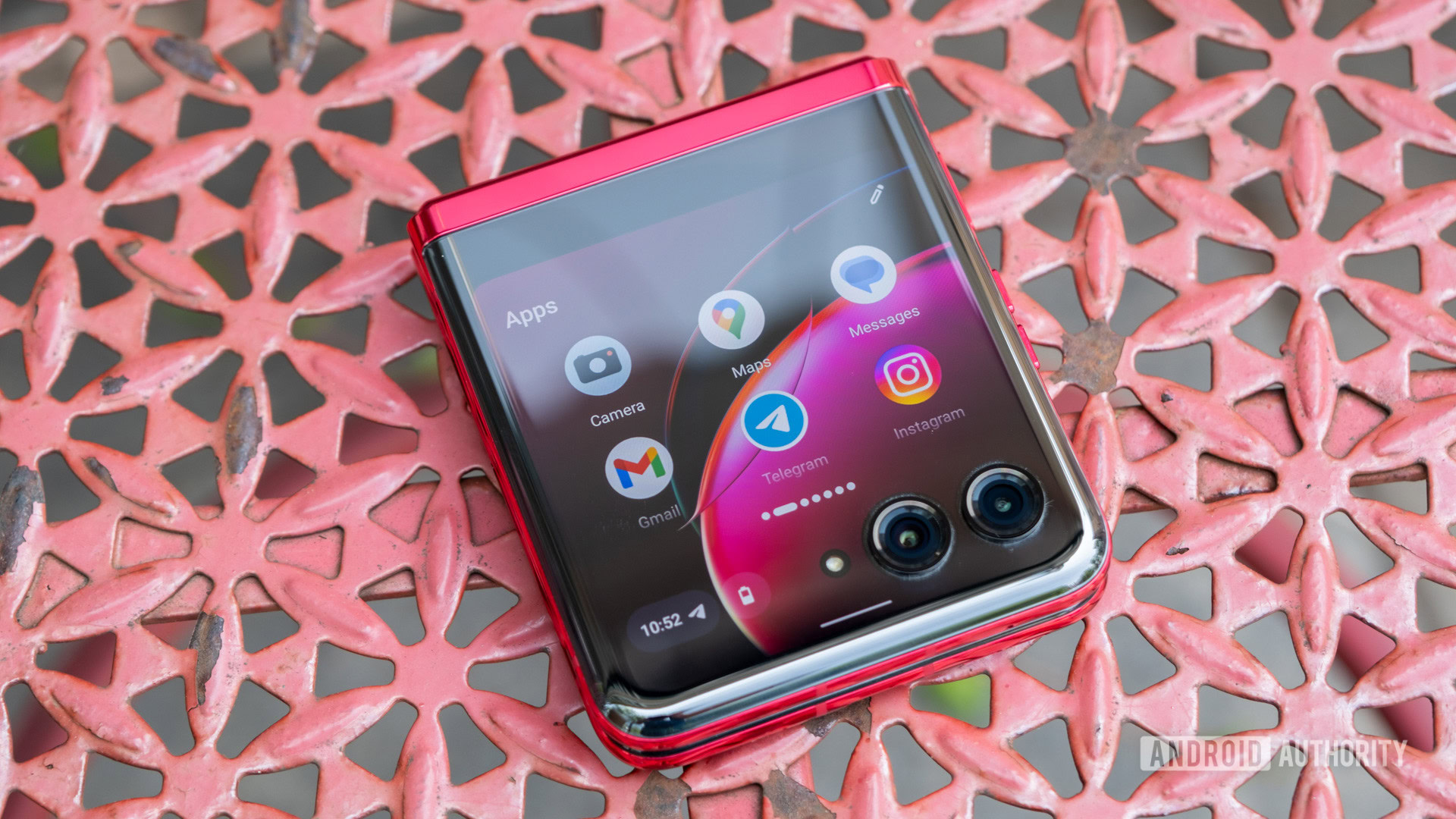
Motorola has been in the foldable game for a few years, but it’s never really made a mark until now. The Razr Plus takes on a design that’s not too different from devices like the Flip, though it was the first to bring a super-sized front display at 3.6 inches. It was also the first to officially support all apps on the front screen — though not all of them work perfectly on the scrunched display.
The Razr Plus is also known as Razr 40 Ultra in international markets, though it remains the same device with the same Snapdragon 8 Plus Gen 1 processor and 8GB of RAM. You also get 256GB storage, a 3,800mAh battery, and a dual camera with a 12MP wide and a 13MP ultrawide shooter.
The Razr Plus is sold in the United States starting at $999.99, making it a reasonably affordable option. In our Motorola Moto Razr Plus review, we found it to have great software, decent fast charging options, a great design, and solid performance. It also has an IP52 rating, which makes it special because it has some dust protection, unlike many other foldables.


Razr Plus specs:
- Display: 6.7-inch and 2.7-inch
- Internal display: 6.9-inch LTPO pOLED
- External display: 3.6-inch OLED
- SoC: Snapdragon 8 Plus Gen 1
- RAM: 8GB
- Storage: 256GB
- Camera: 12MP and 13MP
- Front camera: 32MP
- Battery: 3,800mAh
- Software: Android 13
What is the cheapest foldable phone I can buy?
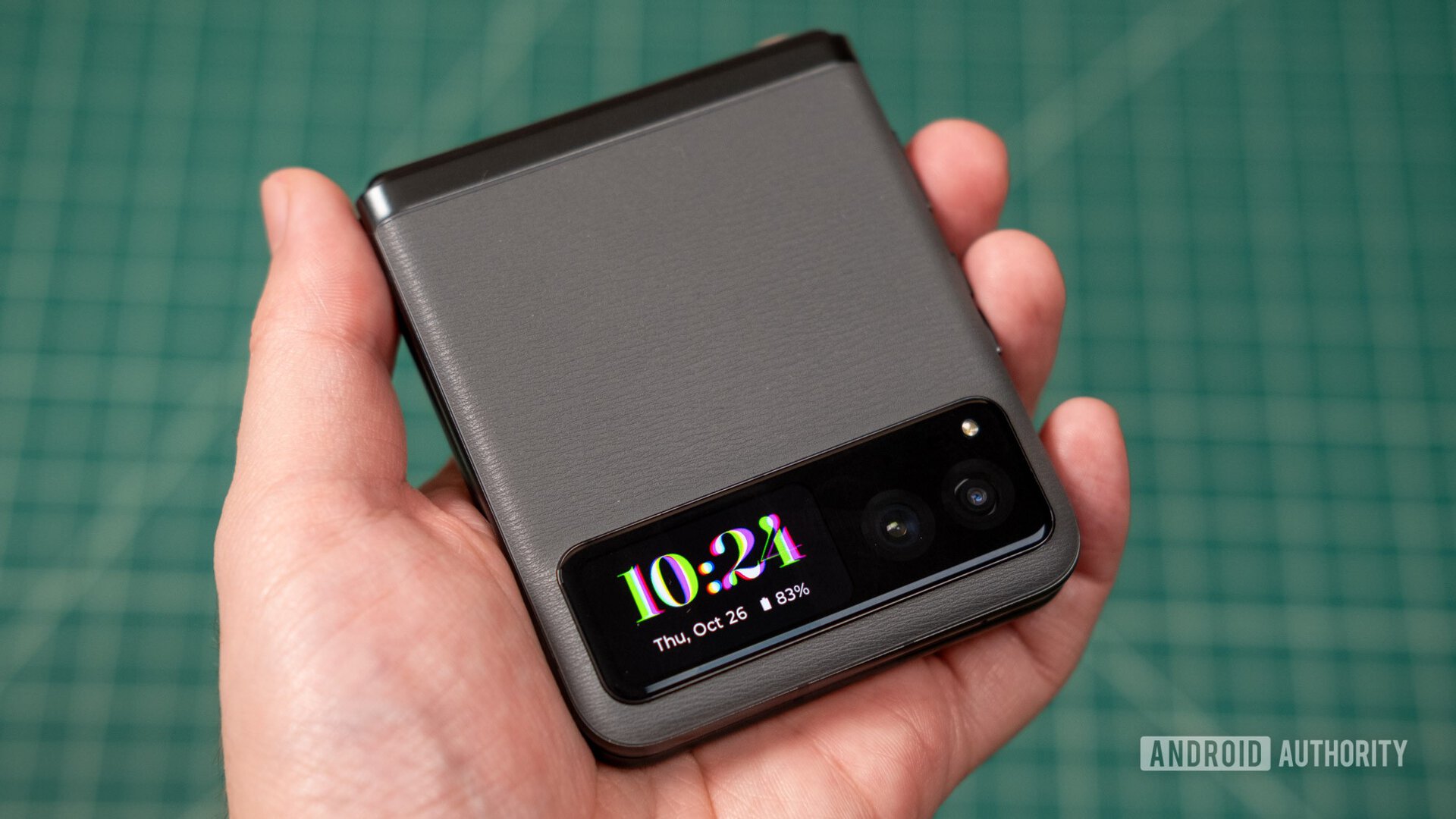
What if you want a foldable phone but are on a tight budget? Generally speaking, a tight budget and foldables don’t mix, as you saw above, especially for tablet hybrid models. Every option recommended on our main list will cost around $999 for a flip model or $1700 or more for a tablet hybrid. That said, there are cheaper options out there. For those in the US market, the Motorola Razr (2023) is the most obvious pick at just $700.
Although it’s not perfect, we had plenty of positive things to say in our Motorola Razr 2023 review. Just be aware that this is definitely a much more mid-range experience. You get a Snapdragon 7 Gen 1 processor and 8GB of RAM. There’s also a 1.5-inch front display, and a 6.9-inch internal screen. The cameras could be better, wireless charging is pretty slow at 5W, and you only get an IP52 rating. Otherwise, it is a pretty good phone. Especially at such a reasonable price.


Are there any other options?
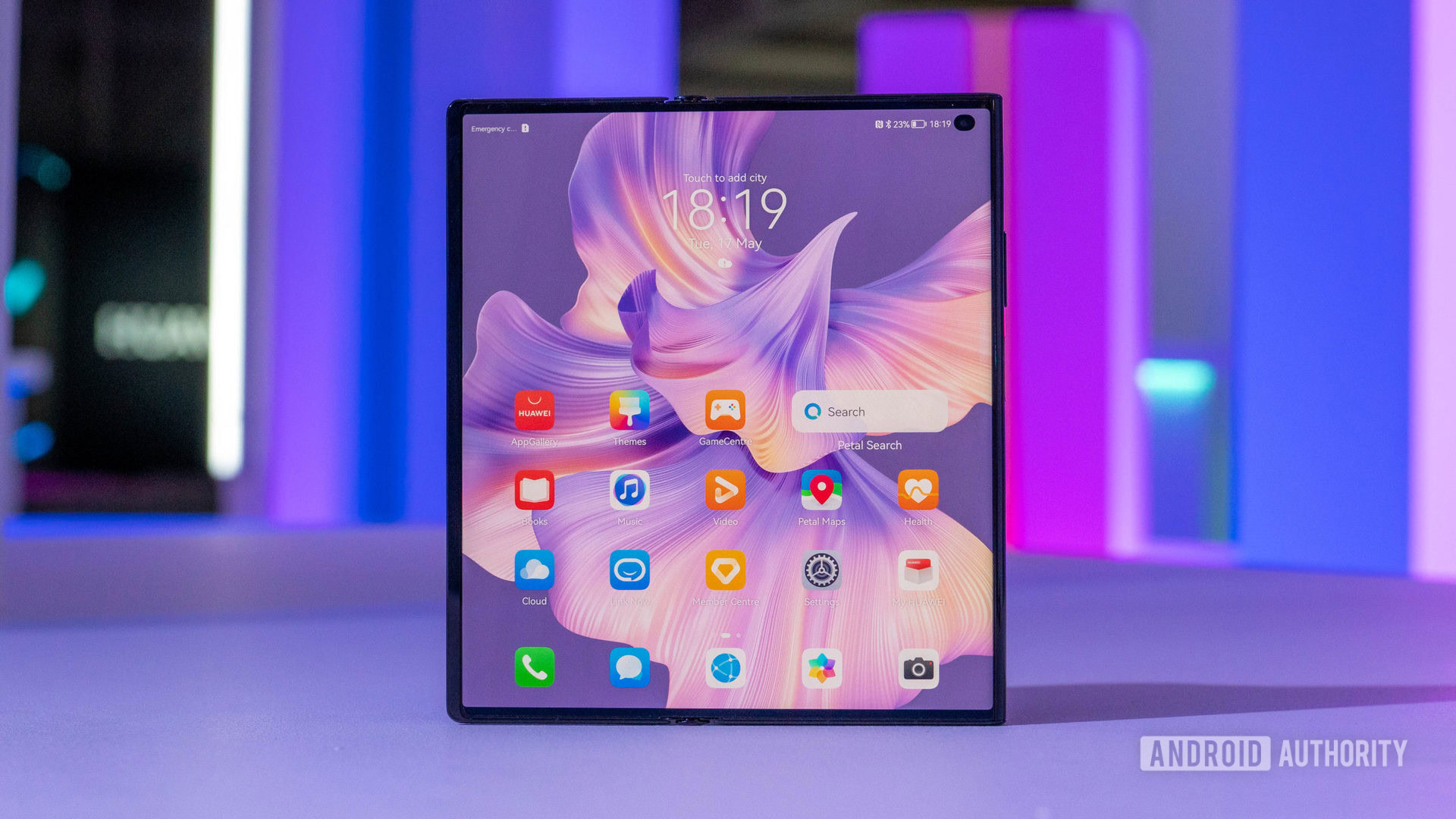
The foldable market has expanded a lot over the years, though the vast majority of options still remain mostly available in China, Europe, or other markets outside the states. Just be aware none of these can be currently purchased in the US:
- OPPO Find N3 Flip ($1199 at Giztop): If you want to have no crease, OPPO is the only manufacturer that has found the right solution. The advanced hinge in the OPPO Find N3 Flip makes the crease nearly unnoticeable. Not to mention, it offers a great overall experience.
- OPPO Find N3 ($1,599 at Giztop): If you want the invisible crease in a fold-out device, the OPPO Find N3 is the one to get. It’s also a very powerful handset, with all the latest high-end specs and features.
- HUAWEI Mate X3 ($2319 at Amazon): This phone is pretty powerful, and comes with an IPX8 rating. It also has great cameras and a gorgeous design. The only reason we don’t recommend it is because it has no Google services.
- HUAWEI Pocket S ($1033.36 at Huawei): The Pocket S is a great flip phone if you can live without Google services, too. It comes with mid-end specs, but a great design.
- Xiaomi Mix Fold 3 ($1499 at Giztop): The Mix Fold 3 offers excellent performance, great cameras, and an overall great experience. It is also one of the thinnest foldable phones at 10.9mm folded. The only downside is that it’s only officially available in China, and that it has no IP rating.
How to find the right foldable for your needs
If you’ve landed on this page, chances are you’re seriously considering purchasing a foldable phone. But how do you choose the right one for your needs? The first step is to determine whether a foldable phone is indeed a good fit for you. Once you’ve established that, you need to consider what you want from your foldable device: are you attracted to the flip phone style, which emphasizes a cool factor and easier pocketability, or are you in search of a device that can transform into a larger tablet to enhance productivity and other activities? How important is budget to you? Let’s dive a bit deeper into all of this below.
Are foldable phones worth it?
They may be all the hype these days, but are foldable phones worth it? Despite their appeal, they tend to be more expensive and less durable than traditional candy bar phones. As someone who has used the Z Flip, Z Flip 3, and Z Flip 4, I’m a fan of foldable displays. However, based on my experience, it’s important to clarify: Foldables aren’t for everyone.
Do any of these situations sound familiar to you?
- Your phones inevitably end up with dents, major scratches, or even tiny screen fractures after a few years of use, even with a case.
- You have young children to whom you often hand your phone for mobile games.
- You need your phone around 24/7 for work (or addiction?) and spend a lot of time in dusty or sandy environments.
- People tend to call you clumsy, and you’re generally not great with fragile items.
It might seem obvious, but if you identify with the above, buying a foldable could be an expensive mistake. Personally, I fall somewhere in the middle, yet my Z Flip 3 only lasted about two years of daily use before the hinge jammed. I can’t recall dropping it or anything significant, but I have kids, ADHD, and, well, things happen. If you’re considering a foldable, be prepared to take extra care of it. Many lack waterproofing, and none are dustproof yet.
Foldables need to be treated with care, so they're only suitable for a certain lifestyle.
So, how do you take care of a foldable phone? Simple. Leave it in the car when you go to the beach, or put it in a water- and sand-proof pouch. Ensure you don’t drop it, as hitting the hinge wrong could turn your phone into an expensive paperweight, especially if it’s out of warranty. Be cautious about who you hand your phone to, as not everyone will treat it with care. While a good case can help, most don’t fit snugly and are more likely to slip off compared to traditional phones, at least in my experience.
Durability is the biggest downside to foldables. They are also more expensive, and some users are bothered by the creases in foldable displays, though this is something one quickly adjusts to.
This might sound like I’m discouraging you from getting a foldable. Quite the opposite, I love them but it’s important to understand what you’re getting into investing into a technology that’s only been on the market for a little over five years. If you are certain you’ll take care of a foldable and don’t mind the other downsides mentioned, it can be worth it as long as you have clear expectations going in. Some of the biggest advantages of foldable phones include the ability to transform from a standard phone size to a tablet in the case of tablet hybrids, or they can even fold in half for easy pocketability if we’re talking about foldable flip phones. Foldables also just look infinitely cooler than their more ordinary counterparts.
Will Apple ever make a foldable and should I wait for it?
For now there an Android foldable phone is the only way to go but will there ever be an Apple foldable phone? While the idea of a foldable iPhone has definitely cropped up in more than one rumor over the years, the strongest claims suggest a foldable iPhone will happen first. Likely sometime in 2025 or even 2026. If you currently are an iPhone user you have no choice but to wait it out or jump ship to Android.
Foldable or Flippable? That is the question
Okay, technology a folding flip phone is still a foldable device but the point here is that you have two main form factors to pick from:
- Tablet hybrid: These models are about hte size of a typical phone when folded but transform into a smaller tablet for improved productivity, bigger screen entertainment, and more.
- Foldable flip phones: These models look more like old school flip phones on the outside, complete with small front displays for glanceable information. Once unfolded, the experience is identical to any other candy bar model.
I can’t tell you which one works best for you, as it’s mostly a subjective thing. Just be aware flip phones have no major advantages over traditional phones outside of cool factor and pocketability, whereas hybrid tablets clearly have the advantage of screen real estate.
FAQs
Most manufacturers make their devices to handle at least 200,000 folds. That would be enough to fold and unfold a handset about 100 times daily for nearly 5.5 years. Of course, your mileage will vary, and you might get a defective handset, but phone makers swear by their technology.
Foldable devices aren’t cheap. Expect to pay $1,000 for most affordable modern foldables. And this is for flip versions. Fold-out devices will cost significantly more. These are mostly considered high-end handsets, though. At least you’re getting a powerful device for all that cash. The only exception here is the Motorola Razr 2023, which costs only $700.
Not necessarily! Many of these come with an external display that offers at least some level of functionality. Flip foldables like the Razr 5G have tiny screens in the front, which can be used to glance at notifications, change songs, and more quickly. Fold-out phones have an external display that is more similar to a traditional phone in size. Technically, you could use it without opening the phone at all.
While there are a few options to choose from, we’d recommend getting a Samsung Galaxy Z Fold 5, Galaxy Z Flip 5, or a Pixel Fold for most people.
The most affordable foldable phone we would still be willing to recommend is the Motorola Razr 2023. It is a good foldable and costs only $700.
It’s too soon to tell, but at the moment, foldable are still niche devices. Despite being innovative, they still face many problems that prevent them from going mainstream.